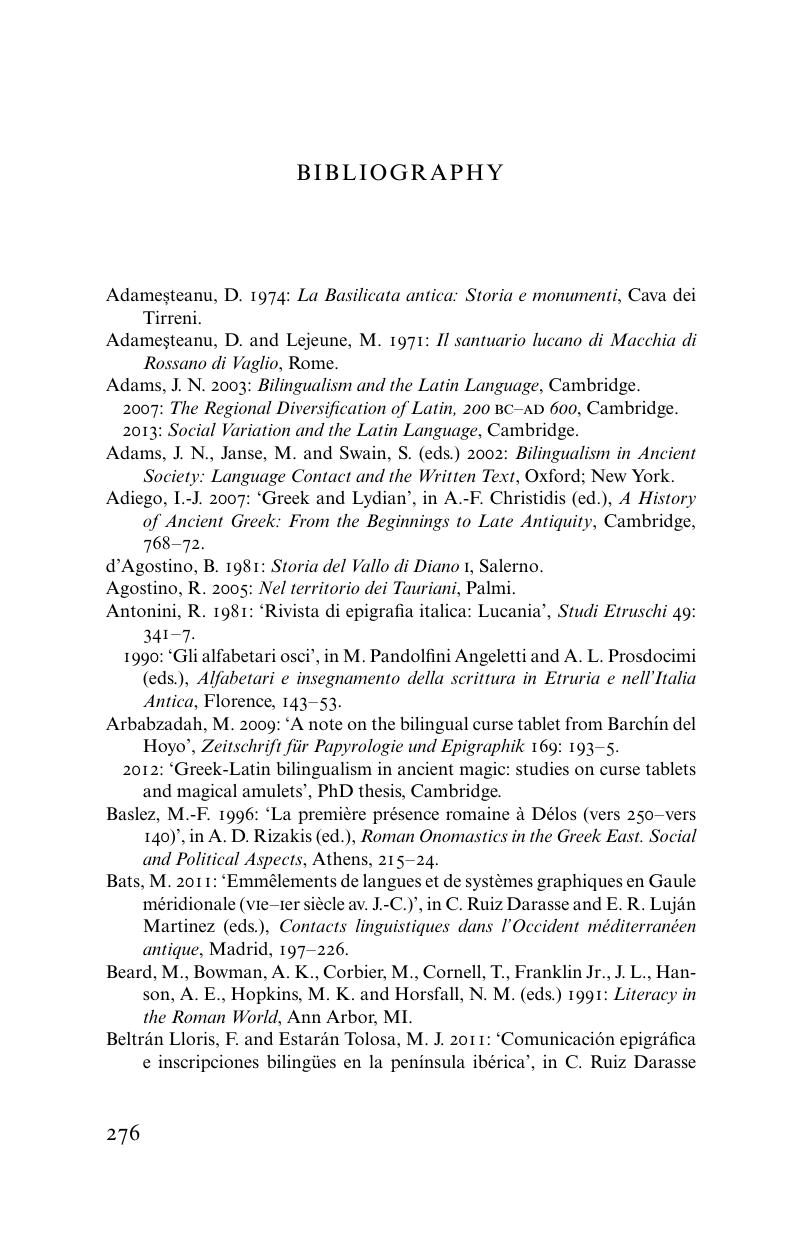Book contents
- Oscan in Southern Italy and Sicily
- Cambridge Classical Studies
- Oscan in Southern Italy and Sicily
- Copyright page
- Contents
- Book part
- Glossary
- Glossary
- Illustrations
- Maps
- Tables
- 1 Introduction
- 2 Bilingualism and language contact in written texts
- 3 Alphabets, epigraphy and orthography
- 4 Dedicatory inscriptions
- 5 Curse tablets
- 6 Legal texts
- 7 Official inscriptions, coins, funerary inscriptions, stamps and graffiti
- 8 Conclusions
- Book part
- Book part
- Bibliography
- General Index
- Index Locorum
- References
Bibliography
Published online by Cambridge University Press: 05 October 2015
- Oscan in Southern Italy and Sicily
- Cambridge Classical Studies
- Oscan in Southern Italy and Sicily
- Copyright page
- Contents
- Book part
- Glossary
- Glossary
- Illustrations
- Maps
- Tables
- 1 Introduction
- 2 Bilingualism and language contact in written texts
- 3 Alphabets, epigraphy and orthography
- 4 Dedicatory inscriptions
- 5 Curse tablets
- 6 Legal texts
- 7 Official inscriptions, coins, funerary inscriptions, stamps and graffiti
- 8 Conclusions
- Book part
- Book part
- Bibliography
- General Index
- Index Locorum
- References
Summary

- Type
- Chapter
- Information
- Oscan in Southern Italy and SicilyEvaluating Language Contact in a Fragmentary Corpus, pp. 276 - 294Publisher: Cambridge University PressPrint publication year: 2015

